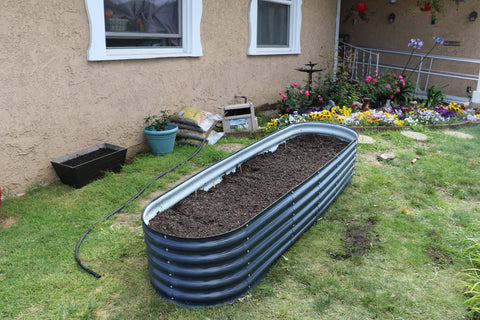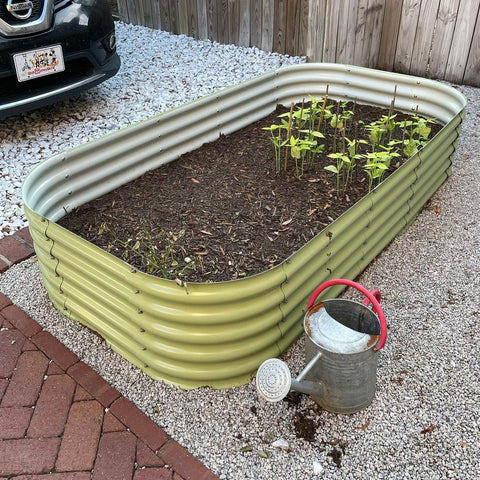Knowledge from Olle Garden Bed: Water Your Garden
The habits of gardeners for watering vary widely. Some gardeners are busy with their non-garden lives, leaving their poor plants sitting thirsty until they wither and get water. On the other hand, some gardeners pamper their plants by submerging them in too much water. Either way, you're putting stress on your plants. Debilitated plants are the first to fall prey to bugs and diseases, producing fewer flowers or vegetables. The following content also has some reference value for raised garden beds.

Find the right balance to water your garden
Watering may seem simple, but it actually takes a little skill to do it properly. Start by determining your soil type and measuring the actual amount of water your plants receive.
Vegetables need an inch of water a week, whether it's rainfall or irrigation. That's about six gallons per square yard per week," says Robert Polomsky Clemson Extension Horticulturist at Clemson University, "watering 1/2 inch twice a week on sandy soil." Clay or loam soil can accept 1 inch of water once a week.
It is better to thoroughly soak the soil with infrequent watering than regular watering in shallow layers. Deep soaking encourages plant roots to penetrate deep into the soil, while shallow water brings roots closer to the surface, leaving plants vulnerable to drought.
Polomsky said rely on common sense and observation to decide when to water.
"Sandy soil dried to a depth of 2 to 4 inches indicates a need for water. In clay, just not being able to dig to this depth easily is enough to know that it is dry," he said.
Cheap rain gauges are an easy way to track how much water your garden is getting. If your plant doesn't get an inch of water in a week, you know to replenish extra watering.

Watering too much
Gardeners may think that too much water is better than not enough, but in reality, either way can cause damage.
In addition to wasting water, if you keep the soil waterlogged, you risk harming your plants," Polomski said, "Roots need air to breathe, and when soil pores are completely filled with water, roots and their ability to absorb water and minerals suffer."
During germination, the soil needs to be evenly moistened. Sometimes certain plants require more water than others.
"In addition to the first few weeks after germination, certain vegetables need to be hydrated during the critical stages of growth," Polomsky said, "for example, Lima, stalks, and beans need water when they flower." Sweet corn especially needs water during the development of spit, tassels, and ears. Eggplant, pepper and tomatoes need water from flowering to harvest.
Proper watering saves resources and time. Mulch also slows the evaporation of water in the soil while protecting plant roots from extreme temperatures and adding organic matter to the soil.
"If you water frugally, at the foot of your vegetables. Keep 2 to 4 inches of cover and water only when absolutely necessary," Polomsky said.
Look for plants that match your watering habits
Watering your garden gardener Erica Shaffer recommends determining your watering personality and choosing plants that suit your watering habits.
"Are you an underwater person or a water person? You have to be aware of you and how to take care of your garden," Schaefer said, "and once you figure that out, you can choose whatever type of plant is right for you to offer."
Some plants, such as Sedum, perform better in dry conditions. Columbine loves moist soil. You can look up the characteristics of plants from the website to help you find plants that suit your watering personality, soil type and sunshine level.
Watering doesn't have to be an exact science. However, with a little care and measurement, your plants will be happier and reward you with bigger flowers and a better harvest.

Gardening tools and horticultural watering systems
Watering your garden completely automatically can be done using an automatic garden watering system or a water meter. These gardening tools may include a sprinkler system or a water timer that automatically runs your hose for a period of time every day or as needed. As long as they are set up to distribute the correct amount of water to your garden, these tools can provide a consistent amount of water while automating and eliminate the hassle of daily watering.
